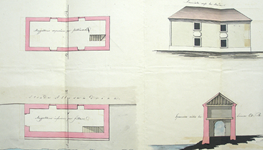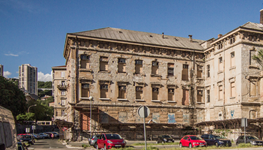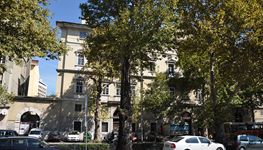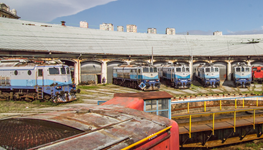Search result

Rope Factory of Rijeka - operational building
In 1764, Nicolò Crespi, a native of Rimini, opened a manufacturing plant for ropes in Rijeka. The company’s main products were ropes for ships. Sources show that the plant had sixteen employees in 1802. Giovanni Sirola, who gained ownership of the factory around 1860, greatly contributed to the modernization of the factory. Sirola gave the idea of moving the manufacturing production to a new, larger building and, in 1901, he put Emilio Ambrosini in charge of the project. It is a sim ...

H-complex, T-complex, The Tobacco Factory
Crucial for the establishment of the Tobacco Factory in Rijeka was the imperial patent referring to the monopoly in the production of tobacco, issued on 20 November 1850. This patent became effective in Hungary, Transylvania, Croatia, Slavonia and the Military Krajina in March 1851. On 24 May 1851, the Hungarian government bought the buildings of the former Sugar Refinery for 100,000 gold ducats and started producing tobacco in the existing infrastructure of the collapsed Sugar Refinery. The fir ...

The Sugar Refinery Administrative Building
The Sugar Refinery complex was located along the former sea coast all the way to the old Lazaretto. Today it is situated in Krešimirova Street opposite to the railway station. The complex project was carried out according to plans by the engineer Francesco Saverio Bonome. A magnificent late Baroque palace remained from the former complex, built in 1786. Presumably, its architect was Andrea Menini. The main southern façade has a simple neoclassical composition with three monumental ...

A traction maintenance depot
After the construction of the railway and the main railway station, it was necessary to make a series of accompanying facilities, above all, a traction maintenance depot. A locomotive depot was made not far from the main railway station, in the former Industrijska Street. The architect and the exact time of construction are unknown, but it can be assumed that the storage was built just before World War I. It is a semi-circular ground floor building, covered by a sloping roof. Inside the building ...
